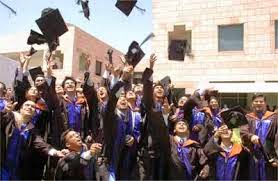The movie Twelve Angry Men begins with a jury of 12 men who are locked in a deliberation room to decide the fate of an 18 year old boy from the slums who is accused of murdering his father. All the evidence, on the face of it, points to the fact that the boy is indeed the murderer, and a guilty verdict would send the boy to the gallows.
Now, even before the discussion between these 12 men begins, most of them are convinced that the boy is guilty and they would be done with this thing soon. Most of them, except one! And the tale begins..One juror who wants to atleast discuss the case threadbare, who wants to examine the facts one more time, who wants to be absolutely sure before they all ask the judge to pronounce him guilty.
An intriguing story, devoid of any rosy scenery and glamour; the movie also gives an amazing lesson about how biases influence our thinking and how biases clog our logic and our minds. I was fortunate enough to learn this concept in such an interesting way in my college and here, I try to put them down in words. Let us look at a few types of biases that we come across in the movie and try to understand them.
Juror #3 is very biased towards the accused teenager, and that is because his own son had once hit him on the jaw and had run away from home at the age of 15. He says, "I've got a kid...when he was fifteen, he hit me in the face...I haven't seen him in three years. Rotten kid! I hate tough kids! You work your heart out (but it's no use)". This text explains that this juror is biased towards all teenagers who rebel and who act tough. So, he just generalizes his personal experience and lets this logic influence his thinking about the slum kid. He uses the actions of his son towards him as an anchor around which his arguments revolve. This type of bias can be called 'Anchoring Bias'.
Look at what Juror #4 has to say to support his argument. He says, "We're missing the point here. This boy - let's say he's a product of a filthy neighborhood and a broken home. We can't help that. We're not here to go into the reasons why slums are breeding grounds for criminals. They are. I know it. So do you. The children who come out of slum backgrounds are potential menaces to society." He assumes that dirty locales and domestic fights are a norm in slum areas, and children living there have crime and villainy drilled into their minds. He, in fact, is very convinced that they are a social nuisance. This bias can be a 'Stereotype Bias'.
Juror #10 stereotypes all those people who live in the slums negatively. He says, "They don’t need any real big reason to kill someone, either. You know, they get drunk, and bang, someone’s lying in the gutter… most of them, it’s like they have no feelings". He assumes that all those kids who are born in such conditions and who have been exposed to violence from a small age, turn out to be notorious, and can murder anyone they want. This belief convinces him completely that this kid had indeed killed his father. He has this image of slum kids and uses this information to interpret it in a way that confirms his beliefs about teenage kids. This bias can be called 'Confirmation Bias'.
It's quite fascinating how innovative and entertaining learning can be. An amazing movie, which holds up beautifully even if seen today - a must watch for all.
Tidbit: Did you know Twelve Angry Men was remade in Hindi as Ek Ruka Hua Faisla in 1986 and starred accomplished actors like Pankaj Kapur and Annu Kapoor?


